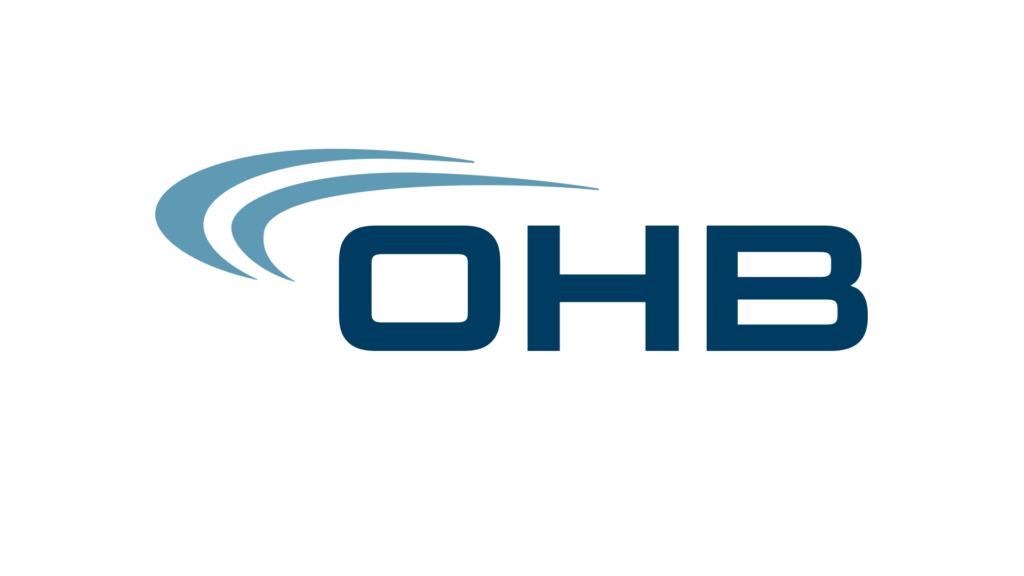Ever wondered why some companies consistently outperform their competitors, maintain lower turnover rates, and foster genuinely happy workplaces? The secret might be simpler than you think. While many factors contribute to organizational success, one element has emerged as a critical differentiator in today's competitive business landscape: corporate wellness.
But here's what most business leaders don't realize—corporate wellness extends far beyond gym memberships and annual health screenings. The most successful programs address the whole person, including physical, mental, social, and emotional well-being. And as workplace dynamics continue to evolve, particularly with the rise of remote and hybrid work models, the definition of corporate wellness is transforming too.
In this comprehensive guide, we'll explore how forward-thinking organizations are reimagining corporate wellness to create thriving workplace cultures, boost productivity, and enhance employee satisfaction. You'll discover practical strategies for implementing effective wellness initiatives, measuring their impact, and adapting them to your unique organizational needs.
Ready to transform your workplace into a healthier, more productive environment where employees genuinely want to be? Let's dive in.
What is Corporate Wellness?
Corporate wellness encompasses the various programs, policies, and benefits that organizations implement to support and improve the overall health and well-being of their employees. These initiatives go beyond traditional healthcare benefits to address multiple dimensions of wellness, including physical, mental, emotional, and social health.
At its core, corporate wellness is a strategic approach that recognizes the fundamental connection between employee well-being and organizational performance. When employees are healthy, engaged, and supported, they're more likely to be productive, creative, and committed to their work.
Corporate wellness is not just a program—it's a philosophy that places employee health at the center of organizational success.
Modern corporate wellness programs have evolved significantly from their early focus on physical health alone. Today's comprehensive programs typically include:
- Physical health initiatives (fitness programs, health screenings, nutrition support)
- Mental health resources (stress management, mindfulness training, counseling services)
- Financial wellness education
- Work-life balance policies
- Social connection opportunities
- Professional development resources
The most effective corporate wellness programs are integrated into the company culture rather than existing as standalone initiatives. They reflect a genuine commitment to employee well-being that permeates all aspects of the organization, from leadership practices to workplace policies.
The Evolution of Corporate Wellness Programs

From Physical Safety to Holistic Well-being
Corporate wellness has undergone a remarkable transformation over the decades, evolving from simple occupational health measures to comprehensive well-being strategies.
- 1970s-1980s: Early corporate wellness focused primarily on workplace safety and basic health screenings. Programs typically centered on reducing workplace accidents and identifying major health risks.
- 1990s-2000s: As healthcare costs rose, wellness programs expanded to include fitness initiatives, smoking cessation programs, and weight management. The focus shifted toward preventing chronic diseases and reducing healthcare expenses.
- 2010s: Mental health gained recognition as a critical component of overall wellness. Companies began incorporating stress management, mindfulness training, and work-life balance initiatives.
- 2020s and Beyond: The COVID-19 pandemic accelerated the evolution toward truly holistic wellness programs that address physical, mental, emotional, and social well-being. Remote work brought new challenges, highlighting the importance of social connection and belonging in the workplace.
Today's most effective corporate wellness programs recognize that employee well-being is multidimensional and interconnected. Physical health affects mental health, which influences social well-being, which impacts work performance—creating a complex web of factors that comprehensive wellness programs must address.
The Business Case for Corporate Wellness
While improving employee health and happiness is intrinsically valuable, corporate wellness programs also deliver significant business benefits that make them a smart investment.
Key Benefits of Corporate Wellness Programs
| Benefit | Statistics | Impact |
|---|---|---|
| Reduced Healthcare Costs | 28% reduction in sick days | Lower insurance premiums and reduced absenteeism costs |
| Improved Productivity | 15% more productive on average | Higher output and better quality work |
| Enhanced Recruitment | 87% consider wellness benefits | Attraction of top talent |
| Increased Retention | 31% lower voluntary turnover | Reduced recruiting and training costs |
| Stronger Company Culture | 89% more likely to recommend | Improved reputation and employee advocacy |
Research consistently shows that well-designed corporate wellness programs deliver a positive return on investment. A meta-analysis published in the American Journal of Health Promotion found that for every dollar spent on wellness programs, companies saved an average of $3.27 in healthcare costs and $2.73 in absenteeism costs.
Beyond these quantifiable benefits, corporate wellness programs contribute to intangible advantages like improved morale, greater employee engagement, and enhanced company reputation—all of which ultimately support business success.
Essential Components of Effective Corporate Wellness Programs
The most successful corporate wellness programs take a comprehensive approach, addressing multiple dimensions of well-being through various initiatives and resources.
Physical Wellness Initiatives
Physical wellness remains a cornerstone of corporate wellness programs, with initiatives designed to promote healthy behaviors and prevent illness:
- Fitness Programs: On-site fitness facilities, subsidized gym memberships, or virtual fitness classes
- Health Screenings: Regular biometric screenings, health risk assessments, and preventive care
- Nutrition Support: Healthy food options in cafeterias, nutrition education, and cooking demonstrations
- Ergonomic Workspaces: Proper equipment and setup to prevent physical strain and injury
Mental and Emotional Wellness Resources
As awareness of mental health issues has grown, so has the importance of supporting employees' psychological well-being:
- Stress Management Programs: Mindfulness training, meditation sessions, and stress reduction workshops
- Mental Health Benefits: Access to counseling services, therapy, and mental health days
- Resilience Training: Programs that help employees develop coping skills and emotional resilience
- Work-Life Balance Policies: Flexible scheduling, remote work options, and reasonable workload expectations
Social Wellness Opportunities
Human connection is vital for well-being, yet often overlooked in traditional wellness programs. Progressive companies are now prioritizing social wellness through:
- Team-Building Activities: Events and experiences that foster camaraderie and connection
- Community Service: Volunteer opportunities that create meaning and strengthen relationships
- Interest Groups: Employee resource groups and clubs centered around shared interests
- Social Events: Gatherings that allow employees to connect outside of work contexts
Neroia offers an innovative platform designed specifically to address the social dimension of employee well-being. By facilitating organic connections among coworkers through AI-powered activity suggestions tailored to individual interests, Neroia helps break down departmental silos and foster meaningful workplace relationships.
Financial Wellness Education
Financial stress significantly impacts overall well-being, making financial wellness an important component of comprehensive programs:
- Financial Education: Workshops and resources on budgeting, saving, and investing
- Retirement Planning: Guidance and tools for long-term financial security
- Student Loan Assistance: Programs to help employees manage educational debt
- Financial Counseling: Access to financial advisors and personalized guidance
Implementing a Successful Corporate Wellness Program
Creating an effective corporate wellness program requires thoughtful planning, implementation, and ongoing management. Here's a step-by-step approach to developing a program that meets your organization's unique needs:
1. Assess Current State and Employee Needs
Before designing your program, gather data to understand your workforce's specific wellness needs and preferences:
- Conduct anonymous health risk assessments
- Survey employees about their wellness interests and challenges
- Analyze healthcare utilization data to identify common health issues
- Review existing wellness initiatives to determine what's working and what's not
2. Secure Leadership Support and Establish Goals
Wellness programs thrive with strong leadership backing and clear objectives:
- Obtain visible support from executives and managers
- Establish specific, measurable goals aligned with business objectives
- Define key performance indicators (KPIs) to track program success
- Create a dedicated budget for wellness initiatives
3. Design a Comprehensive Program
Based on your assessment and goals, develop a program that addresses multiple dimensions of wellness:
- Include a variety of initiatives to appeal to different preferences
- Ensure accessibility for all employees, including remote workers
- Consider cultural factors and diverse needs
- Create a calendar of wellness activities and events
4. Communicate Effectively
Even the best-designed program will fail without proper communication:
- Develop a multi-channel communication strategy
- Clearly explain program benefits and how to participate
- Share success stories and testimonials
- Regularly remind employees about available resources
5. Encourage Participation
Motivate employees to engage with your wellness program:
- Incentives: Offer meaningful rewards for participation and achievement
- Team Challenges: Create friendly competition to boost engagement
- Peer Champions: Recruit wellness advocates throughout the organization
- Ease of Access: Make participation simple and convenient
6. Measure and Evaluate
Regularly assess your program's effectiveness:
- Track participation rates and engagement
- Measure health outcomes and behavior changes
- Calculate ROI and VOI (value of investment)
- Gather feedback through surveys and focus groups
7. Refine and Improve
Use evaluation data to continuously enhance your program:
- Address participation barriers
- Add or modify initiatives based on feedback
- Stay current with wellness trends and best practices
- Celebrate successes and share results with stakeholders
Overcoming Common Corporate Wellness Challenges
Even well-designed wellness programs face obstacles. Here are strategies for addressing common challenges:
Low Participation Rates
If employees aren't engaging with your program:
- Gather feedback to understand barriers to participation
- Enhance communication about program benefits
- Offer more convenient options (virtual, on-demand)
- Consider more appealing incentives
- Ensure activities are inclusive and accessible
Budget Constraints
When resources are limited:
- Focus on high-impact, low-cost initiatives
- Leverage free community resources
- Implement peer-led programs
- Partner with local businesses for discounted services
- Demonstrate ROI to justify increased investment
Measuring Effectiveness
If you're struggling to demonstrate program value:
- Establish clear metrics aligned with business goals
- Use both quantitative and qualitative measures
- Track long-term trends rather than short-term results
- Consider holistic value beyond direct cost savings
- Invest in analytics tools to simplify data collection
Maintaining Momentum
When initial enthusiasm wanes:
- Regularly refresh program offerings
- Create a wellness calendar with seasonal themes
- Recognize and celebrate participant achievements
- Share success stories to inspire others
- Continuously gather and implement feedback
The Future of Corporate Wellness

Key Trends Shaping the Future of Workplace Wellness
As workplace dynamics continue to evolve, corporate wellness programs are adapting to address emerging needs and leverage new technologies.
- Personalization: Moving away from one-size-fits-all approaches toward customized wellness experiences based on individual needs and preferences.
- Digital Wellness Solutions: Expanding use of apps, wearables, and virtual platforms to deliver wellness resources anytime, anywhere.
- Mental Health Focus: Growing emphasis on psychological well-being, with more resources dedicated to stress management, resilience, and mental health support.
- Social Connection: Increasing recognition of the importance of workplace relationships and community, especially in remote and hybrid work environments.
- Whole-Person Approach: Broader definition of wellness that encompasses physical, mental, emotional, social, financial, and even spiritual dimensions.
One innovative approach to addressing the social dimension of corporate wellness comes from Neroia, which provides a social employee benefits platform designed to foster organic connections among coworkers. Its AI-powered system suggests activities tailored to individual employee interests and schedules, facilitating small-group gatherings that break down departmental silos and strengthen cross-departmental ties. This type of solution represents the future of corporate wellness—addressing the whole person and creating meaningful experiences that enhance overall well-being.
Measuring the Success of Corporate Wellness Programs
Effective measurement is essential for demonstrating program value and guiding improvements. Here's how to develop a comprehensive evaluation strategy:
Key Metrics to Track
- Participation and Engagement
- Program enrollment rates
- Activity participation levels
- Digital platform usage
- Completion rates for challenges and programs
- Health Outcomes
- Changes in biometric measures
- Health risk assessment results
- Self-reported health improvements
- Healthcare utilization patterns
- Business Impact
- Absenteeism and presenteeism rates
- Healthcare cost trends
- Productivity measures
- Turnover and retention statistics
- Employee Experience
- Satisfaction with wellness offerings
- Overall employee engagement scores
- Work-life balance indicators
- Stress and burnout levels
Evaluation Methods
To gather comprehensive data on program effectiveness, use a combination of:
- Surveys and Questionnaires: Collect feedback on program satisfaction, perceived value, and self-reported outcomes.
- Health Assessments: Conduct regular screenings to track changes in physical health metrics.
- Platform Analytics: Analyze usage data from wellness apps and portals to understand engagement patterns.
- Focus Groups: Gather qualitative insights about program strengths and improvement opportunities.
- ROI Calculations: Quantify financial returns by comparing program costs to healthcare savings and productivity gains.
Remember that some wellness benefits take time to materialize. Include both short-term and long-term measures in your evaluation strategy, and look for leading indicators that predict future outcomes.
Creating a Culture of Wellness
The most successful corporate wellness programs are embedded in a broader culture that truly values and supports employee well-being. Here's how to foster a wellness-oriented organizational culture:
Leadership Commitment
Leaders at all levels must demonstrate genuine commitment to wellness:
- Model healthy behaviors and work-life boundaries
- Participate visibly in wellness activities
- Allocate adequate resources to wellness initiatives
- Recognize and reward wellness achievements
- Incorporate wellness into strategic planning
Supportive Policies and Practices
Ensure that organizational policies align with wellness goals:
- Flexible work arrangements that support work-life balance
- Reasonable workload expectations
- Paid time off that employees are encouraged to use
- Meeting practices that respect personal time
- Physical environments designed for health and comfort
Social Connection and Community
Foster a sense of belonging and support:
- Create opportunities for meaningful interaction
- Encourage team-based wellness activities
- Celebrate collective wellness achievements
- Build networks of wellness champions
- Facilitate mentoring and peer support
This is where platforms like Neroia can play a transformative role. By facilitating organic connections among employees based on shared interests, Neroia helps create the social fabric that underpins a true culture of wellness. Its AI-powered system suggests activities tailored to individual preferences, making it easy for employees to connect through sports, wellness activities, and cultural events.
Continuous Learning and Growth
Promote ongoing development in all dimensions of wellness:
- Provide regular education on wellness topics
- Share the latest research and best practices
- Encourage skill development for better self-care
- Create learning communities around wellness interests
- Offer resources for personal and professional growth
Conclusion: The Holistic Future of Corporate Wellness
As we look to the future of corporate wellness, one thing is clear: successful programs will increasingly take a holistic, personalized approach that addresses the multidimensional nature of human well-being. The days of standalone fitness programs or annual health screenings as the extent of corporate wellness are behind us.
Tomorrow's most effective wellness initiatives will seamlessly integrate physical, mental, emotional, and social well-being into the fabric of organizational life. They'll leverage technology to deliver personalized experiences while maintaining the human connection that's fundamental to true wellness.
Companies that embrace this holistic vision of corporate wellness will gain a significant competitive advantage in attracting and retaining talent, boosting productivity, and creating thriving workplace cultures. They'll recognize that investing in employee well-being isn't just the right thing to do—it's a strategic business decision with far-reaching benefits.
One company at the forefront of this evolution is Neroia, whose social employee benefits platform exemplifies the future of corporate wellness by addressing the critical social dimension of well-being. By fostering organic connections among coworkers through AI-powered activity suggestions, Neroia helps create the meaningful relationships that research shows are essential for overall health and happiness.




